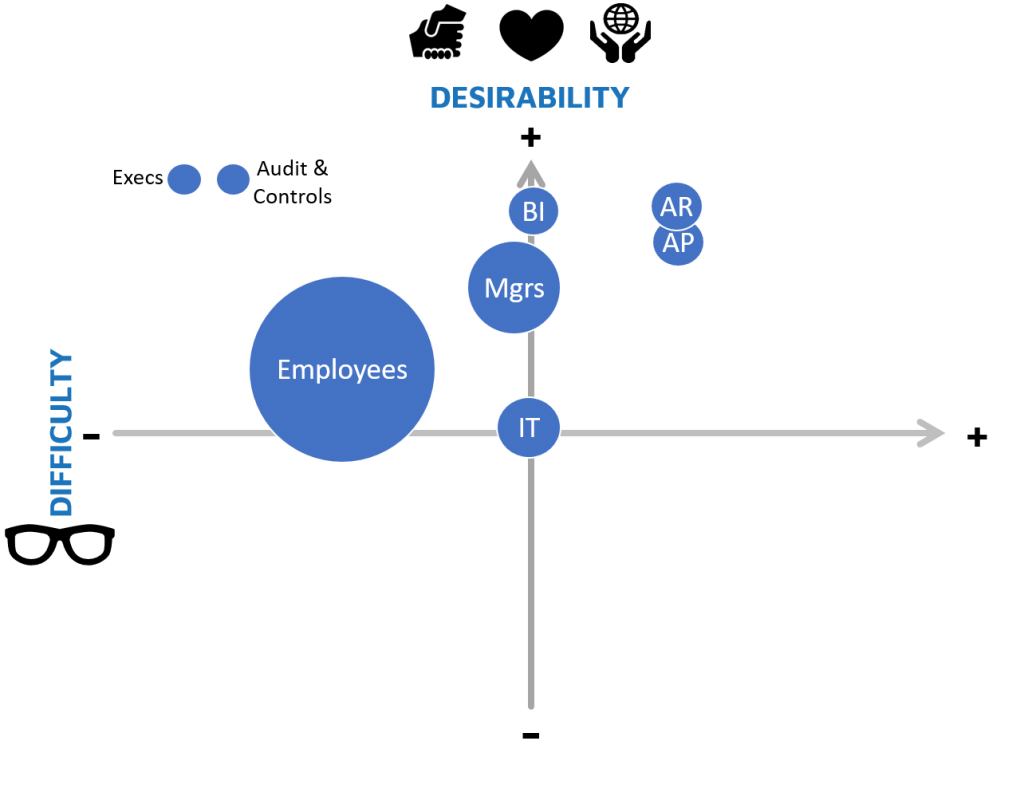Many of you attended my speech on the Two Factor Assessment at the ACMP global conference. For those who missed it, I demonstrated how two simple questions can be used to quickly assess the impact of a change, and determine where resistance is likely to occur (get it here):
- How DESIRABLE is this change?
- How DIFFICULT is it to achieve success?
Those two questions assume you’ve done your homework. In this article I’ll explain what that homework looks like to enable you to not only complete the two-factor assessment, but the entire change faster than ever before.
The Promise
A few weeks ago I committed to build a change plan from scratch in a week.
The Assessment
First things first. I needed to meet with two critical leaders from the project to get their perspectives on the project. The first meeting was not for a couple of days so I moved to another task.
Just before the first meeting, I reviewed the business case. It was well-written with a good description of the scope and clear benefits statements. Imagine! The main objective was to implement a new enterprise-wide finance system that would reduce the level of manual work (bye-bye spreadsheets!) and dramatically improve the auditability of all transactions.
I logged my questions about the business case and prepped for the interviews. You may need to interview more people (and you should if they have important perspectives), but typically after two interviews, I get repetition. I don’t need to complete them all before I begin drafting the plan.
The Interviews
If you are just getting oriented to the program, use the full interview guide here.
For this rapid version, I asked:
- What do you see as the biggest changes for employees? (Scope; High Impacts)
- What else do they have to do that is different from today? (Scope; Other Impacts)
- Overall, are these desirable changes? (Desirability, Benefits)
- What difficulties do you anticipate? (Difficulty)
I repeated the above 4 questions for each major segment of the program (GL, Expense, Reporting, Audit, Consolidation, etc.), and each major stakeholder group (Employees, Managers, AR, AP, etc.). As you can imagine, the answers often prompted more questions to clarify the changes and get details on exactly what would change (I call this, “peeling the onion”).
And two final questions to wrap:
5. What do we want to be sure people know is NOT changing? (Continuity)
6. Is there anything else we haven’t covered that I should know?
Building The Plan
With two interviews and the business case (and a bit of help from the PM), I built a concise PowerPoint deck with the following slides:
- What: High Level Description of the Scope
- Who: Stakeholders
- When: Timeline
- Why: Impacts & Benefits
- What’s NOT Changing
- The Plan: Measures of Success
- The Plan: Capacity
- Two-Factor Impact Assessment
- Tactical Plan (Comms, Readiness, Training)

It was not fancy. It didn’t need to be. With the facts laid out in a very easy-to-understand format, everyone understood the progression and why I was recommending the tactics therein. The two-factor assessment brought it to life.
Want the template? Get the Rapid Change Plan now.



